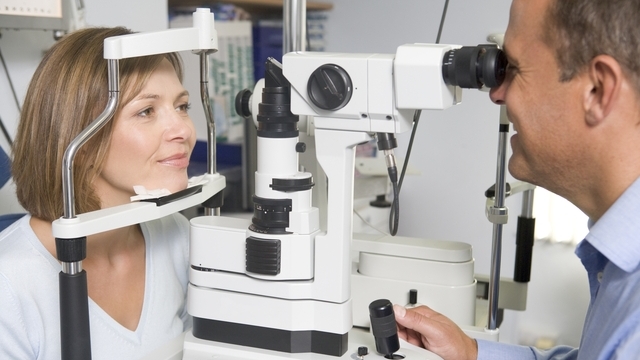 MonkeyBusiness Images/PhotoSpin
MonkeyBusiness Images/PhotoSpin
Early detection of Alzheimer’s may start in the eyes or nose, not in the brain. This conclusion is the result of several new research studies that were reported during the week of July 12-17, 2014 at the Alzheimer’s Association International Conference® 2014 (AAIC® 2014) in Copenhagen.
Researchers at the Harvard Aging Brain Study used the University of Pennsylvania Smell Identification Test (UPSIT) to study the ability of 215 healthy participants with no memory loss to recognize familiar smells. UPSIT consists of 40 scratch-and-sniff panels with different odors.
The study participants were also given standard tests for Alzheimer’s including cognitive evaluations and positron emission tomography (PET) scans. The PET scans measured the presence of deposits of beta-amyloid plaque in the brain.
Beta-amyloid is a protein known to accumulate in the brain in people who have Alzheimer’s. Researchers believe the plaque blocks the transfer of electrical signals between brain cells.
The study showed that patients who scored lower on the odor recognition test also had higher levels of beta-amyloid in the brain. The researcher team intends to follow the patients over an extended time to continue the study.
Researcher Davangere Devanand, MBBS, MD and professor of Psychiatry, and colleagues at Columbia University Medical Center also studied the connection between odor detection and Alzheimer’s.
Between 2004 and 2006 they administered UPSIT to 1037 elderly people living in New York City who did not have dementia at the start of the study. They conducted other tests on the group in three cycles concluding in 2010.
Devanand reported at AAIC® 2014 that for the 757 patients who were followed throughout the study, lower scores on UPSIT were significantly related to a transition to dementia and Alzheimer’s.
"If further large-scale studies reproduce these results, a relatively inexpensive test such as odor identification may be able to identify subjects at increased risk of dementia and Alzheimer's disease at a very early stage, and may be useful in identifying people at increased risk of cognitive decline more broadly," Devanand said.
Two teams of researchers have also studied how deposits of beta-amyloid in the eye can help predict the onset of Alzheimer’s.
Massachusetts-based Cognoptix Inc. concentrated on the lens of the eye while researchers including Shaun Frost of the Commonwealth Scientific and Industrial Research Organization in Australia, studied the eye’s retina.
Both groups developed ways to measure beta-amyloid deposits in the eye and both found correlations between the amount of beta-amyloid in the eye and deposits in the brain revealed by PET scans.
“We envision this technology potentially as an initial screen that could complement what is currently used: brain PET imaging, MRI imaging, and clinical tests," Frost said.
"If further research shows that our initial findings are correct, it could potentially be delivered as part of an individual's regular eye check-up. The high resolution level of our images could also allow accurate monitoring of individual retinal plaques as a possible method to follow progression and response to therapy."
There currently is no cure for Alzheimer’s. Scientists hope further development of these earlier detection methods will help identify patients for further research. They anticipate that more detailed studies of the early stages of the disease may someday lead to a cure or treatment to halt the progression of Alzheimer’s.
Alzheimer’s disease is a progressive brain condition that damages and destroys brain cells. It is the most common form of dementia and is the sixth leading cause of death in the United States. Women over age 60 have a one in six risk of developing the disease.
Sources:
Science Daily. Smell and eye tests show potential to detect Alzheimer’s early. Web. July 14, 2014.
http://www.sciencedaily.com/releases/2014/07/140713155512.htm
The Wall Street Journal. Key to Detecting Alzheimer’s Early Could Be in the Eye. Shirley Wang. Web. July 14, 2014.
http://online.wsj.com/articles/key-to-detecting-alzheimers-early-could-b...
The Washington Post. Alzheimer’s researchers hunt for new tools to identify disease’s onset. Fredrick Kunkle. Web. July 14, 2014.
http://www.washingtonpost.com/national/health-science/alzheimers-researc...
Alzheimer’s Association. What Is Alzheimer’s? Web. July 14, 2014.
http://www.alz.org/alzheimers_disease_what_is_alzheimers.asp
Alzheimer’s Association. Alzheimer’s Facts and Figures. Web. July 14, 2014.
http://www.alz.org/alzheimers_disease_facts_and_figures.asp
Alzheimer’s Association. 11. More about plaques. Web. July 14, 2014.
http://www.alz.org/braintour/plaques.asp
Reviewed July 16, 2014
by Michele Blacksberg RN
Edited by Jody Smith




